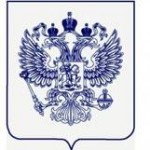Archive for Октябрь, 2011
ПАК Экзоскелетон.Вскрыли конверты. Объявлен перечень участников подавших заявки на конкурс.
- Тип контента: Новостная статья
- Номер документа: 1844
- Название документа: ПАК Экзоскелетон.Вскрыли конверты. Объявлен перечень участников подавших заявки на конкурс.
- Номер (DOI, IBSN, Патент): Не заполнено
- Изобретатель/автор: Не заполнено
- Правопреемник/учебное заведение: Не заполнено
- Дата публикации документа: 2011-10-06
- Страна опубликовавшая документ: Россия
- Язык документа: Русский
- Наименование изделия: EXOMEN
- Источник: http://zakupki.gov.ru/pgz/public/action/orders/info/common_i
- Вложения: Да
- Аналитик: Не заполнено
 6 октября 2011г. прошла процедура вскрытия конвертов с заявками на участие в конкурсе на право заключения государственных контрактов на выполнение опытно-конструкторских работ для государственных нужд в рамках ФЦП «Исследования и разработки по приоритетным направлениям развития научно-технологического комплекса России на 2007-2013 годы»
6 октября 2011г. прошла процедура вскрытия конвертов с заявками на участие в конкурсе на право заключения государственных контрактов на выполнение опытно-конструкторских работ для государственных нужд в рамках ФЦП «Исследования и разработки по приоритетным направлениям развития научно-технологического комплекса России на 2007-2013 годы»
Категория: ПАК Экзоскелетон | 1 Комментарий »
Muscle Suit 2006.Видео.
- Тип контента: Новостная статья, Видео
- Номер документа: 1806
- Название документа: Muscle Suit 2006.Видео
- Номер (DOI, IBSN, Патент): Не заполнено
- Изобретатель/автор: Kobayashi Hiroshi
- Правопреемник/учебное заведение: Не заполнено
- Дата публикации документа: Не заполнено
- Страна опубликовавшая документ: США
- Язык документа: Английский
- Наименование изделия: Muscle Suit
- Источник: http://www.youtube.com/watch?v=rg246IFabOc&feature=related
- Вложения: Нет
- Аналитик: Не заполнено
 В передаче Beyond tomorrow засветился прототип Muscle Suit 2006. Видео смотреть с 5 минуты.
В передаче Beyond tomorrow засветился прототип Muscle Suit 2006. Видео смотреть с 5 минуты.
Категория: Muscle Suit 2006 | Нет комментариев »
Lower Limb Prostheses Design Considerations
- Тип контента: Научная статья
- Номер документа: 3471
- Название документа: Lower Limb Prostheses Design Considerations
- Номер (DOI, IBSN, Патент): Не заполнено
- Изобретатель/автор: Не заполнено
- Правопреемник/учебное заведение: Не заполнено
- Дата публикации документа: Не заполнено
- Страна опубликовавшая документ: Не заполнено
- Язык документа: Английский
- Наименование изделия: Не заполнено
- Источник: http://www.docstoc.com/docs/34954667/Lower-Limb-Prostheses-D
- Вложения: Да
- Аналитик: Дмитрий Соловьев
 John Register’s Olympic dreams were crushed while he was training for Atlanta in 1994. An improper landing from a hurdle jump hyper extended his knee, severing a leg artery and ultimately leading to an amputation. Register was faced with a choice between confinement to a wheelchair or a prosthesis followed by intense therapy and rehabilitation. The desire to be independent and mobile led him to opt for the latter. Register was fitted with an above-knee prosthetic leg. The limb consisted of soft, flexible plastic and carbon graphite with openings to allow the thigh muscles to grow. This was revolutionary compared to ordinary prosthetics, with their hard, rigid sockets. Non-pliable materials confine the muscles, causing them to atrophy. Prosthetic composition was a necessary consideration for John Register; compliant substances absorb the impact of heel strike, and the muscles can generate the necessary energy to move the knee and proceed through the stride. If the material is too compliant, there is not enough reaction force to propel the leg forward into swing phase. In this situation, the knee and hip must generate a large amount of force to continue the motion, costing the amputee a great amount of extra energy and work.
John Register’s Olympic dreams were crushed while he was training for Atlanta in 1994. An improper landing from a hurdle jump hyper extended his knee, severing a leg artery and ultimately leading to an amputation. Register was faced with a choice between confinement to a wheelchair or a prosthesis followed by intense therapy and rehabilitation. The desire to be independent and mobile led him to opt for the latter. Register was fitted with an above-knee prosthetic leg. The limb consisted of soft, flexible plastic and carbon graphite with openings to allow the thigh muscles to grow. This was revolutionary compared to ordinary prosthetics, with their hard, rigid sockets. Non-pliable materials confine the muscles, causing them to atrophy. Prosthetic composition was a necessary consideration for John Register; compliant substances absorb the impact of heel strike, and the muscles can generate the necessary energy to move the knee and proceed through the stride. If the material is too compliant, there is not enough reaction force to propel the leg forward into swing phase. In this situation, the knee and hip must generate a large amount of force to continue the motion, costing the amputee a great amount of extra energy and work.
Категория: Научные статьи | Нет комментариев »
Active tactile exploration using a brain–machine–brain interface
- Тип контента: Научная статья
- Номер документа: 3624
- Название документа: Active tactile exploration using a brain-machine-brain interface
- Номер (DOI, IBSN, Патент): 10.1038/nature10489
- Изобретатель/автор: Zhuang K.Z., Shokur S., O'Doherty J.E., Nicolelis M.A.L., Lebedev M.A., Ifft P.J., Bleuler H.
- Правопреемник/учебное заведение: Duke University, Durham, North Carolina, USA
- Дата публикации документа: 2011-10-05
- Страна опубликовавшая документ: США
- Язык документа: Английский
- Наименование изделия: Не заполнено
- Источник: http://www.nature.com/nature/journal/v479/n7372/full/nature1
- Вложения: Да
- Аналитик: Дмитрий Соловьев
 Brain–machine interfaces use neuronal activity recorded from the brain to establish direct communication with external actuators, such as prosthetic arms. It is hoped that brain–machine interfaces can be used to restore the normal sensorimotor functions of the limbs, but so far they have lacked tactile sensation. Here we report the operation of a brain–machine–brain interface (BMBI) that both controls the exploratory reaching movements of an actuator and allows signalling of artificial tactile feedback through intracortical microstimulation (ICMS) of the primary somatosensory cortex. Monkeys performed an active exploration task in which an actuator (a computer cursor or a virtual-reality arm) was moved using a BMBI that derived motor commands from neuronal ensemble activity recorded in the primary motor cortex. ICMS feedback occurred whenever the actuator touched virtual objects. Temporal patterns of ICMS encoded the artificial tactile properties of each object. Neuronal recordings and ICMS epochs were temporally multiplexed to avoid interference. Two monkeys operated this BMBI to search for and distinguish one of three visually identical objects, using the virtual-reality arm to identify the unique artificial texture associated with each. These results suggest that clinical motor neuroprostheses might benefit from the addition of ICMS feedback to generate artificial somatic perceptions associated with mechanical, robotic or even virtual prostheses.
Brain–machine interfaces use neuronal activity recorded from the brain to establish direct communication with external actuators, such as prosthetic arms. It is hoped that brain–machine interfaces can be used to restore the normal sensorimotor functions of the limbs, but so far they have lacked tactile sensation. Here we report the operation of a brain–machine–brain interface (BMBI) that both controls the exploratory reaching movements of an actuator and allows signalling of artificial tactile feedback through intracortical microstimulation (ICMS) of the primary somatosensory cortex. Monkeys performed an active exploration task in which an actuator (a computer cursor or a virtual-reality arm) was moved using a BMBI that derived motor commands from neuronal ensemble activity recorded in the primary motor cortex. ICMS feedback occurred whenever the actuator touched virtual objects. Temporal patterns of ICMS encoded the artificial tactile properties of each object. Neuronal recordings and ICMS epochs were temporally multiplexed to avoid interference. Two monkeys operated this BMBI to search for and distinguish one of three visually identical objects, using the virtual-reality arm to identify the unique artificial texture associated with each. These results suggest that clinical motor neuroprostheses might benefit from the addition of ICMS feedback to generate artificial somatic perceptions associated with mechanical, robotic or even virtual prostheses.
Категория: Научные статьи | 1 Комментарий »
A mathematical model for mapping EMG signal to joint torque for the human elbow joint using nonlinear regression
- Тип контента: Научная статья
- Номер документа: 1747
- Название документа: A mathematical model for mapping EMG signal to joint torque for the human elbow joint using nonlinear regression
- Номер (DOI, IBSN, Патент): 10.1109/ICARA.2000.4803995
- Изобретатель/автор: Ullah, K, Jung-Hoon Kim
- Правопреемник/учебное заведение: Dept. of Electron. & Commun. Eng., Myongji Univ., Yongin
- Дата публикации документа: 2009-03-21
- Страна опубликовавшая документ: Корея
- Язык документа: Английский
- Наименование изделия: Не заполнено
- Источник: http://ieeexplore.ieee.org/search/freesrchabstract.jsp?tp=&a
- Вложения: Не заполнено
- Аналитик: Не заполнено
 Numerous researchers have investigated the relationship between EMG and joint torque. Most of these studies use some conventional filtering (i.e. rectification followed by low pass filtering) to estimate the electromyogram (EMG) amplitude and then relate it to the joint torque. Currently some advanced pre-processing techniques (i.e. signal whitening) are also used to estimate the EMG amplitude and then relate it to joint torque. In this study we apply some pre-processing techniques like DC offset removal, noise filtering followed by rectification and then we calculate the moving average of the EMG signal. Thus we get a linear envelope (muscle activation) of the EMG signal and use that linear envelope to estimate the joint torque. To map the EMG to joint torque we propose a new mathematical model. This model has some unknown adjustable parameters, and the values of these parameters are obtained using nonlinear regression. Five subjects took part in the experiments. They were asked to perform non-fatiguing and variable force maximal voluntary contractions (MVC) and submaximal voluntary contractions (SMVC), and the resulting elbow joint torque and EMG signals were recorded. This recorded data was entered to the model, to estimate best fit values for the unknown parameters. Once these values of the parameters were obtained they were put into the model and thus joint torque was estimated. Predictions made by our model are well correlated with experimental data in both MVC and SMVC, the correlation coefficient and mean square error obtained for experimental data during MVC are 0.998 and 0.056 Nm respectively. The results of this new model were compared with other existing models and some new models and it was found that our model has greater correlation and least mean square error with experimental data. This model may be helpful in the control systems for recognition systems, robot manipulators, exoskeletons, EMG prosthesis and electric stimulators.
Numerous researchers have investigated the relationship between EMG and joint torque. Most of these studies use some conventional filtering (i.e. rectification followed by low pass filtering) to estimate the electromyogram (EMG) amplitude and then relate it to the joint torque. Currently some advanced pre-processing techniques (i.e. signal whitening) are also used to estimate the EMG amplitude and then relate it to joint torque. In this study we apply some pre-processing techniques like DC offset removal, noise filtering followed by rectification and then we calculate the moving average of the EMG signal. Thus we get a linear envelope (muscle activation) of the EMG signal and use that linear envelope to estimate the joint torque. To map the EMG to joint torque we propose a new mathematical model. This model has some unknown adjustable parameters, and the values of these parameters are obtained using nonlinear regression. Five subjects took part in the experiments. They were asked to perform non-fatiguing and variable force maximal voluntary contractions (MVC) and submaximal voluntary contractions (SMVC), and the resulting elbow joint torque and EMG signals were recorded. This recorded data was entered to the model, to estimate best fit values for the unknown parameters. Once these values of the parameters were obtained they were put into the model and thus joint torque was estimated. Predictions made by our model are well correlated with experimental data in both MVC and SMVC, the correlation coefficient and mean square error obtained for experimental data during MVC are 0.998 and 0.056 Nm respectively. The results of this new model were compared with other existing models and some new models and it was found that our model has greater correlation and least mean square error with experimental data. This model may be helpful in the control systems for recognition systems, robot manipulators, exoskeletons, EMG prosthesis and electric stimulators.
Категория: Ищем научные статьи | Нет комментариев »
Статистика
Категорий: 179
Статей всего: 2,003
По типу:
Видео: 36
Выдержка с форума: 1
Контактные данные: 12
Научная статья: 1388
Не заполнено: 5
Новостная статья: 317
Обзор технологии: 42
Патент: 219
Тех.подробности: 34
Тип: 1
Комментариев: 9,070
Изображений: 3,005
Подробней...
ТОР 10 аналитиков
-
Глаголева Елена - 591
Дмитрий Соловьев - 459
Helix - 218
Ридна Украина))) - 85
Наталья Черкасова - 81
max-orduan - 29
Елена Токай - 15
Роман Михайлов - 9
Мансур Жигануров - 4
Дуванова Татьяна - 3
Календарь
Авторизация
Ошибка в тексте?
Выдели её мышкой!
И нажми Ctrl+Enter